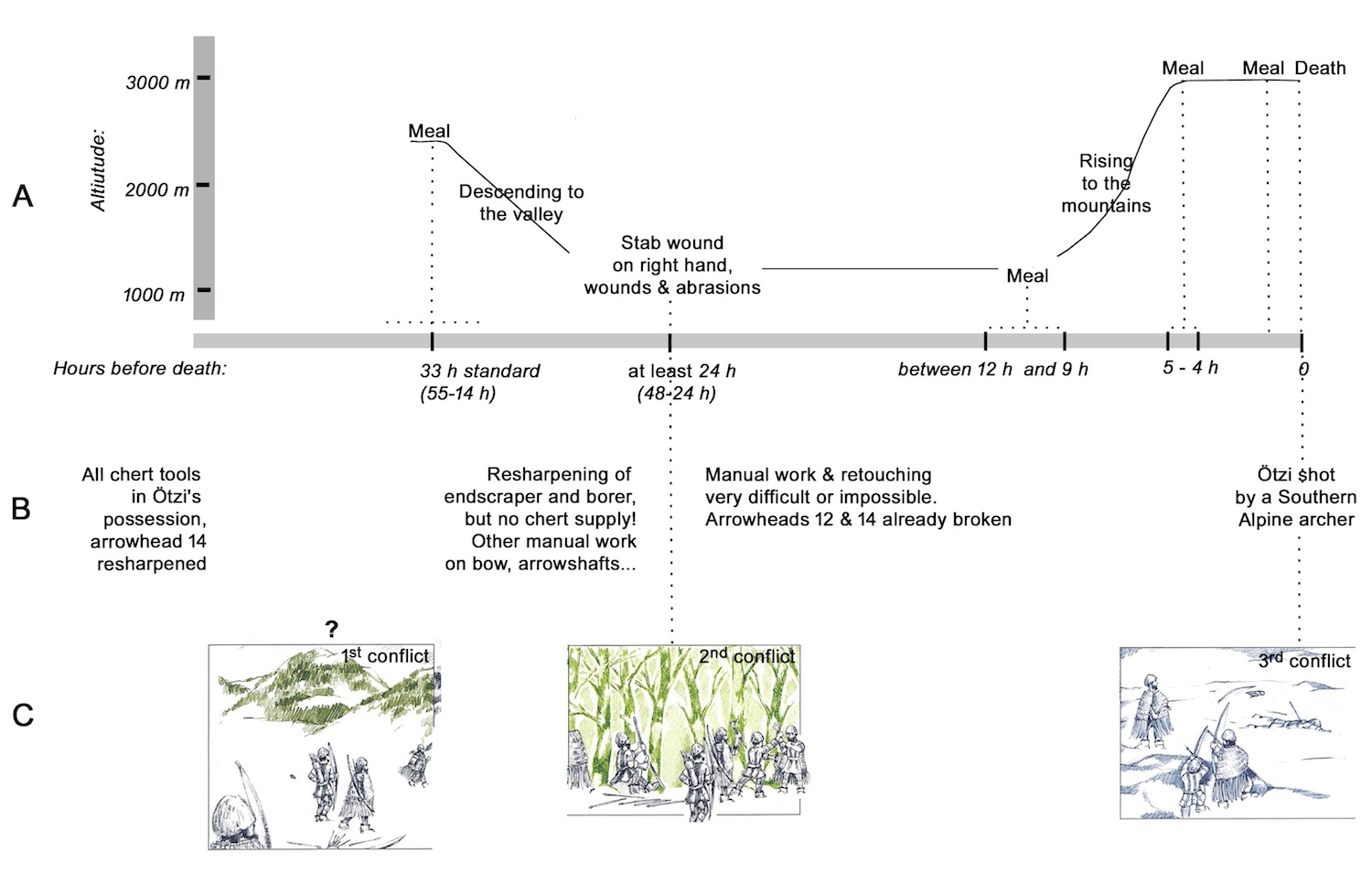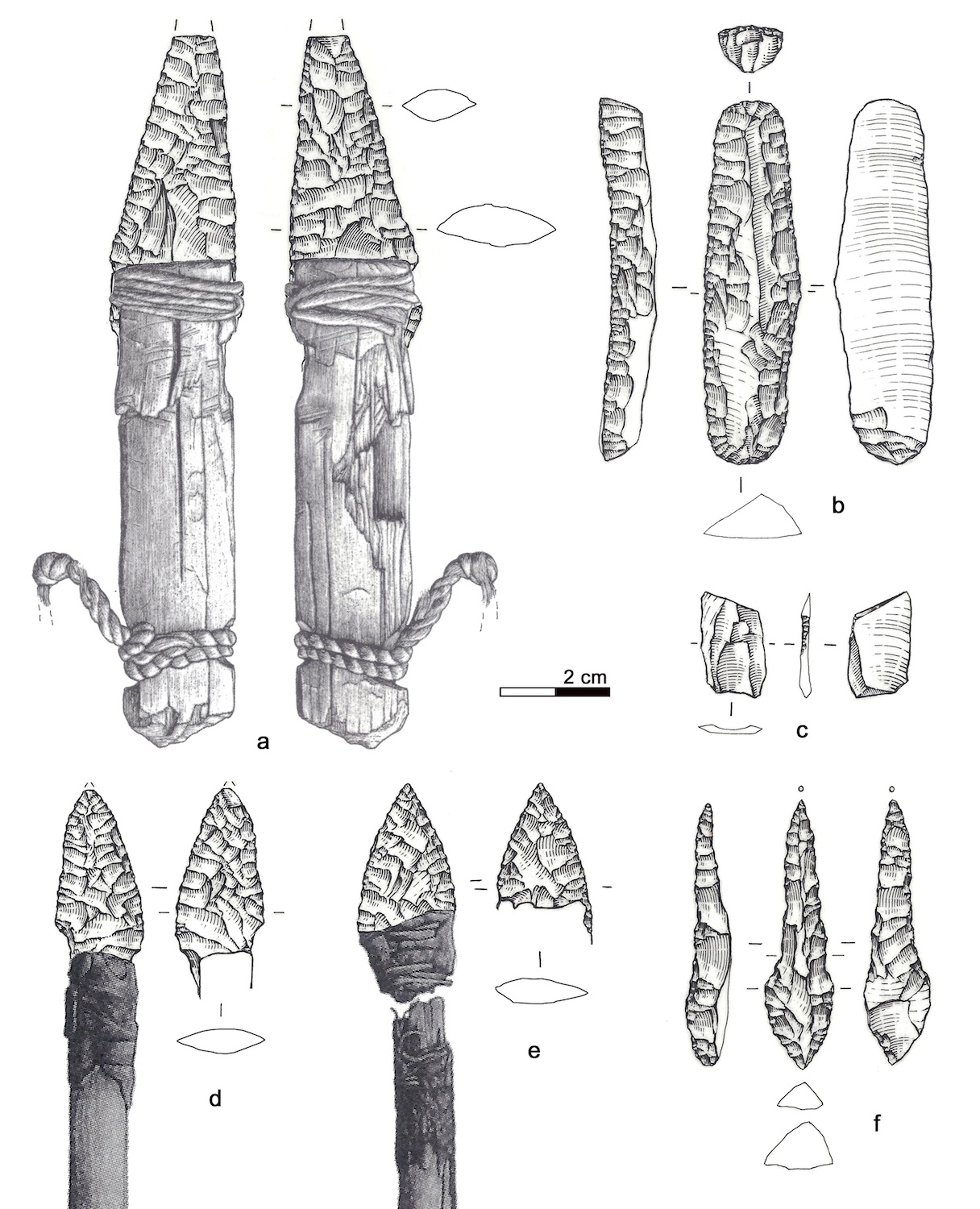Ötzi the Iceman Had Just Sharpened His Tools Days Before His Murder

Days before his violent murder in the Italian Alps about 5,300 years ago, Ötzi the iceman re-sharpened his tools, likely with his right hand, according to a new analysis of the cut marks on his belongings.
However, that may not mean the iceman was sharpening his tools because he was anticipating a fight — especially because he hadn't recently re-sharpened his dagger or other weapons, the researchers in the new analysis said.
"I can't say" whether he was preparing for a fight, study co-researcher Ursula Wierer, an archaeologist at Soprintendenza Archeology, an office within the Italian ministry, told Live Science. "But I think he re-sharpened them because maybe he had some work in mind [that he wanted] to do with these modified tools." [Mummy Melodrama: Top 9 Secrets About Ötzi the Iceman]
There are few mummies as well-studied as Ötzi the iceman. The roughly 45-year-old man sustained a head injury and an artery-piercing arrow in his shoulder when he died sometime between 3370 B.C. and 3100 B.C., during the Copper Age. Hikers discovered his preserved, frozen body in the Alps in northern Italy in 1991, and since then, scientists have intensely studied Ötzi's body and belongings. Their work has revealed that Ötzi had a litany of health problems, including a heart attack waiting to happen, arthritis, bad teeth, lactose intolerance and a possible case of Lyme disease.
However, scientists had yet to do a deep dive into Ötzi's tool kit — which included a dagger, an end scraper, a borer, a flake, an antler retoucher and two arrowheads (plus the arrowhead still embedded in his shoulder) — so Wierer and her colleagues stepped up to the plate.
Researching such ancient, delicate items was challenging; the scientists had just a few days to examine each of the tools using high-powered microscopes and computed tomography (CT) scans, Wierer said. After that, they had a mountain of data to analyze.
Rocky tools
As part of their exhaustive investigation, Wierer and her colleagues examined the type of chert — a hard, dark rock made of silica — that made up many of Ötzi's tools. They found that the chert came from at least three locations: outcrops in Trentino, Italy, located about 25 miles (40 kilometers) away; rocky places in southwestern Trentino, up to 47 miles (75 km) away; and possibly the Trento Plateau, situated at least 43 miles (70 km) away.
Get the world’s most fascinating discoveries delivered straight to your inbox.
Given the sheer distance between these locations and Ötzi's likely home in the Vinschgau Valley — located in the modern-day province of South Tyrol, Italy — it's possible that Ötzi or his contemporaries traded with people from different regions, Wierer said.
"Maybe he did not trade himself, but he [had] some kind of contact with people who traded," Wierer said.
Moreover, an analysis of the cut marks on the tools, as well as the shape of the tools themselves, indicated that Ötzi's belongings incorporated features from two cultures: The arrowheads were typical of the northern Italian tradition, while the end scraper looked like blade tools from the Swiss and southern German lake dwellings of the Horgen culture, the researchers said.
Other studies show that there was trade of chert daggers from northern Italy to southern Germany and to Switzerland during the Copper Age. And the copper from Ötzi's ax hailed from what is present-day Tuscany in central Italy, Live Science previously reported.
"I think we have to imagine that the trade at the time was already quite far-reaching for certain raw materials and certain products," Wierer said. [Album: A New Face for Ötzi the Iceman Mummy]
Right handed
Nearly all of Ötzi's tools had been reworked or re-sharpened over the years, the researchers found. But two artifacts — the oval-shaped end scraper, likely used for cutting plants or working animal hides, and the borer, likely used for boring holes in material such as wood — had been freshly modified, likely by Ötzi himself, Wierer said.
The newer modifications had an opaque patina and didn't show signs of wear, she noted.
In addition, it's likely that Ötzi was right-handed, as shown by an analysis of wear traces on the chert tools, the researchers said. However, given that Ötzi had a cut on his right hand when he died, it's unlikely that he had re-sharpened his tools in the days immediately before his death, said Albert Zink, head of the Institute for Mummy Studies at Eurac Research in Italy, who was not involved with the study.
As for Ötzi being right-handed, "his body is a bit more developed on the right side, so it makes perfect sense," Zink told Live Science. Zink also praised the researchers from the new study for underlining the connections Ötzi had with other cultures.
The study was published online today (June 20) in the journal PLOS One.
Original article on Live Science.

Laura is the managing editor at Live Science. She also runs the archaeology section and the Life's Little Mysteries series. Her work has appeared in The New York Times, Scholastic, Popular Science and Spectrum, a site on autism research. She has won multiple awards from the Society of Professional Journalists and the Washington Newspaper Publishers Association for her reporting at a weekly newspaper near Seattle. Laura holds a bachelor's degree in English literature and psychology from Washington University in St. Louis and a master's degree in science writing from NYU.




